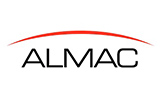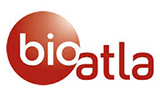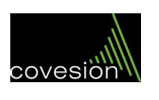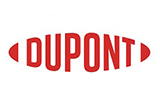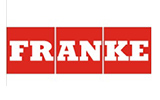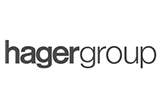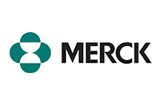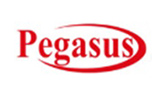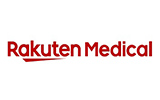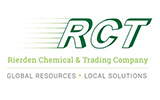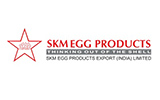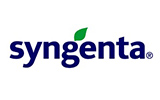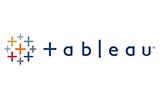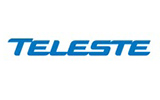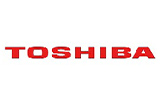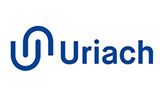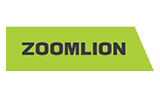CHAPTER 1:INTRODUCTION
1.1.Report description
1.2.Key benefits for stakeholders
1.3.Key market segments
1.4.Research methodology
1.4.1.Primary research
1.4.2.Secondary research
1.4.3.Analyst tools and models
CHAPTER 2:EXECUTIVE SUMMARY
2.1.Key findings of the study
2.2.CXO perspective
CHAPTER 3:MARKET LANDSCAPE
3.1.Market definition and scope
3.2.Key findings
3.2.1.Top investment pockets
3.3.Porter's five forces analysis
3.4.Market share analysis & top player positioning, 2019
3.4.1.Top player positioning, 2019
3.5.Market dynamics
3.5.1.Drivers
3.5.1.1.Demand from the electronics industry for foam-based packaging
3.5.1.2.Demand from the automotive industry
3.5.1.3.Increasing demand for building insulation
3.5.1.4.Increasing demand from the healthcare industry
3.5.2.Restraint
3.5.2.1.Environmental concerns pertaining to foam materials
3.5.3.Opportunity
3.5.3.1.Transition towards bio-based technical foams
3.6.Impact of Key Regulations on the Global Technical Foam Market
3.7.Impact of Covid-19 on the Global Technical Foam Market
CHAPTER 4:TECHNICAL FOAM MARKET, BY PRODUCT FORM
4.1.Overview
4.1.1.Market size and forecast
4.2.Flexible
4.2.1.Key market trends, growth factors, and opportunities
4.2.2.Market size and forecast, by region
4.3.Rigid
4.3.1.Key market trends, growth factors, and opportunities
4.3.2.Market size and forecast, by region
4.4.Spray
4.4.1.Key market trends, growth factors, and opportunities
4.4.2.Market size and forecast, by region
CHAPTER 5:TECHNICAL FOAM MARKET, BY MATERIAL
5.1.Overview
5.1.1.Market size and forecast
5.2.Elastomeric
5.2.1.Key market trends, growth factors, and opportunities
5.2.2.Market size and forecast, by region
5.3.Polyurethane
5.3.1.Key market trends, growth factors, and opportunities
5.3.2.Market size and forecast, by region
5.4.Polyethylene
5.4.1.Key market trends, growth factors, and opportunities
5.4.2.Market size and forecast, by region
5.5.Others
5.5.1.Key market trends, growth factors, and opportunities
5.5.2.Market size and forecast, by region
CHAPTER 6:TECHNICAL FOAM MARKET, BY END-USER INDUSTRY
6.1.Overview
6.1.1.Market size and forecast
6.2.Automotive & Transportation
6.2.1.Key market trends, growth factors, and opportunities
6.2.2.Market size and forecast, by region
6.3.Electrical & Electronics
6.3.1.Key market trends, growth factors, and opportunities
6.3.2.Market size and forecast, by region
6.4.Building & Construction
6.4.1.Key market trends, growth factors, and opportunities
6.4.2.Market size and forecast, by region
6.5.Medical
6.5.1.Key market trends, growth factors, and opportunities
6.5.2.Market size and forecast, by region
6.6.Sporting Equipment
6.6.1.Key market trends, growth factors, and opportunities
6.6.2.Market size and forecast, by region
6.7.Packaging
6.7.1.Key market trends, growth factors, and opportunities
6.7.2.Market size and forecast, by region
6.8.Others
6.8.1.Key market trends, growth factors, and opportunities
6.8.2.Market size and forecast, by region
CHAPTER 7:TECHNICAL FOAM MARKET, BY REGION
7.1.Overview
7.1.1.Market size and forecast
7.2.North America
7.2.1.Key market trends, growth factors, and opportunities
7.2.2.Market size and forecast, by Product form
7.2.3.Market size and forecast, by material
7.2.4.Market size and forecast, by end-user industry
7.2.5.Market share analysis, by country
7.2.5.1.U.S.
7.2.5.1.1.Market size and forecast, by product form
7.2.5.1.2.Market size and forecast, by material
7.2.5.1.3.Market size and forecast, by end-user industry
7.2.5.2.Canada
7.2.5.2.1.Market size and forecast, by product form
7.2.5.2.2.Market size and forecast, by material
7.2.5.2.3.Market size and forecast, by end-user industry
7.2.5.3.Mexico
7.2.5.3.1.Market size and forecast, by product form
7.2.5.3.2.Market size and forecast, by material
7.2.5.3.3.Market size and forecast, by end-user industry
7.3.Europe
7.3.1.Key market trends, growth factors, and opportunities
7.3.2.Market size and forecast, by Product form
7.3.3.Market size and forecast, by material
7.3.4.Market size and forecast, by end-user industry
7.3.5.Market share analysis, by country
7.3.5.1.Germany
7.3.5.1.1.Market size and forecast, by product form
7.3.5.1.2.Market size and forecast, by material
7.3.5.1.3.Market size and forecast, by end-user industry
7.3.5.2.France
7.3.5.2.1.Market size and forecast, by product form
7.3.5.2.2.Market size and forecast, by material
7.3.5.2.3.Market size and forecast, by end-user industry
7.3.5.3.UK
7.3.5.3.1.Market size and forecast, by product form
7.3.5.3.2.Market size and forecast, by material
7.3.5.3.3.Market size and forecast, by end-user industry
7.3.5.4.Italy
7.3.5.4.1.Market size and forecast, by product form
7.3.5.4.2.Market size and forecast, by material
7.3.5.4.3.Market size and forecast, by end-user industry
7.3.5.5.Rest of Europe
7.3.5.5.1.Market size and forecast, by product form
7.3.5.5.2.Market size and forecast, by material
7.3.5.5.3.Market size and forecast, by end-user industry
7.4.Asia-Pacific
7.4.1.Key market trends, growth factors, and opportunities
7.4.2.Market size and forecast, by Product form
7.4.3.Market size and forecast, by material
7.4.4.Market size and forecast, by end-user industry
7.4.5.Market share analysis, by country
7.4.5.1.China
7.4.5.1.1.Market size and forecast, by product form
7.4.5.1.2.Market size and forecast, by material
7.4.5.1.3.Market size and forecast, by end-user industry
7.4.5.2.India
7.4.5.2.1.Market size and forecast, by product form
7.4.5.2.2.Market size and forecast, by material
7.4.5.2.3.Market size and forecast, by end-user industry
7.4.5.3.Japan
7.4.5.3.1.Market size and forecast, by product form
7.4.5.3.2.Market size and forecast, by material
7.4.5.3.3.Market size and forecast, by end-user industry
7.4.5.4.South Korea
7.4.5.4.1.Market size and forecast, by product form
7.4.5.4.2.Market size and forecast, by material
7.4.5.4.3.Market size and forecast, by end-user industry
7.4.5.5.Rest of Asia-Pacific
7.4.5.5.1.Market size and forecast, by product form
7.4.5.5.2.Market size and forecast, by material
7.4.5.5.3.Market size and forecast, by end-user industry
7.5.LAMEA
7.5.1.Key market trends, growth factors, and opportunities
7.5.2.Market size and forecast, by Product form
7.5.3.Market size and forecast, by material
7.5.4.Market size and forecast, by end-user industry
7.5.5.Market share analysis, by country
7.5.5.1.Brazil
7.5.5.1.1.Market size and forecast, by product form
7.5.5.1.2.Market size and forecast, by material
7.5.5.1.3.Market size and forecast, by end-user industry
7.5.5.2.Saudi Arabia
7.5.5.2.1.Market size and forecast, by product form
7.5.5.2.2.Market size and forecast, by material
7.5.5.2.3.Market size and forecast, by end-user industry
7.5.5.3.South Africa
7.5.5.3.1.Market size and forecast, by product form
7.5.5.3.2.Market size and forecast, by material
7.5.5.3.3.Market size and forecast, by end-user industry
7.5.5.4.Rest of LAMEA
7.5.5.4.1.Market size and forecast, by product form
7.5.5.4.2.Market size and forecast, by material
7.5.5.4.3.Market size and forecast, by end-user industry
CHAPTER 8:COMPETITIVE LANDSCAPE
8.1.Introduction
8.2.Product mapping of top 10 players
8.3.Competitive heatmap
8.4.Key development
8.4.1.New Product
8.4.2.Business Expansion
8.4.3.Acquisition
CHAPTER 9:COMPANY PROFILES
9.1.Armacell
9.1.1.Company overview
9.1.2.Company snapshot
9.1.3.Operating business segments
9.1.4.Product portfolio
9.1.5.Business performance
9.1.6.Key strategic moves and developments
9.2.BASF SE
9.2.1.Company overview
9.2.2.Company snapshot
9.2.3.Operating business segments
9.2.4.Product Portfolio
9.2.5.Business performance
9.2.6.Key strategic moves and developments
9.3.Covestro AG
9.3.1.Company overview
9.3.2.Company snapshot
9.3.3.Operating business segments
9.3.4.Product Portfolio
9.3.5.Business performance
9.4.Dow Inc.
9.4.1.Company overview
9.4.2.Company snapshot
9.4.3.Operating business segments
9.4.4.Product portfolio
9.4.5.Business performance
9.4.6.Key strategic moves and developments
9.5.Furukawa Electric Co. Ltd.
9.5.1.Company overview
9.5.2.Company snapshot
9.5.3.Operating business segments
9.5.4.Product portfolio
9.5.5.Business performance
9.6.Huntsman Corporation
9.6.1.Company overview
9.6.2.Company snapshot
9.6.3.Operating business segments
9.6.4.Product Portfolio
9.6.5.Business performance
9.6.6.Key strategic moves and developments
9.7.Kaneka Corporation
9.7.1.Company overview
9.7.2.Company snapshot
9.7.3.Operating business segments
9.7.4.Product Portfolio
9.7.5.Business performance
9.7.6.Key strategic moves and developments
9.8.Recticel
9.8.1.Company overview
9.8.2.Company snapshot
9.8.3.Operating business segments
9.8.4.Product portfolio
9.8.5.Business performance
9.9.Rogers Corporation
9.9.1.Company overview
9.9.2.Company snapshot
9.9.3.Operating business segments
9.9.4.Product Portfolio
9.9.5.Business performance
9.9.6.Key strategic moves and developments
9.10.SABIC
9.10.1.Company overview
9.10.2.Company snapshot
9.10.3.Operating business segments
9.10.4.Product portfolio
9.10.5.Business performance
9.10.6.Key strategic moves and developments
9.11.Sealed Air Corporation
9.11.1.Company overview
9.11.2.Company snapshot
9.11.3.Operating business segments
9.11.4.Product portfolio
9.11.5.Business performance
9.11.6.Key strategic moves and developments
9.12.Sekisui Chemical Co. Ltd.
9.12.1.Company overview
9.12.2.Company snapshot
9.12.3.Operating business segments
9.12.4.Product portfolio
9.12.5.Business performance
9.12.6.Key strategic moves and developments
9.13.Woodbridge Group
9.13.1.Company overview
9.13.2.Company snapshot
9.13.3.Product Portfolio
9.13.4.Key strategic moves and developments
9.14.Zotefoams
9.14.1.Company overview
9.14.2.Company snapshot
9.14.3.Operating business segments
9.14.4.Product Portfolio
9.14.5.Business performance
9.14.6.Key strategic moves and developments


